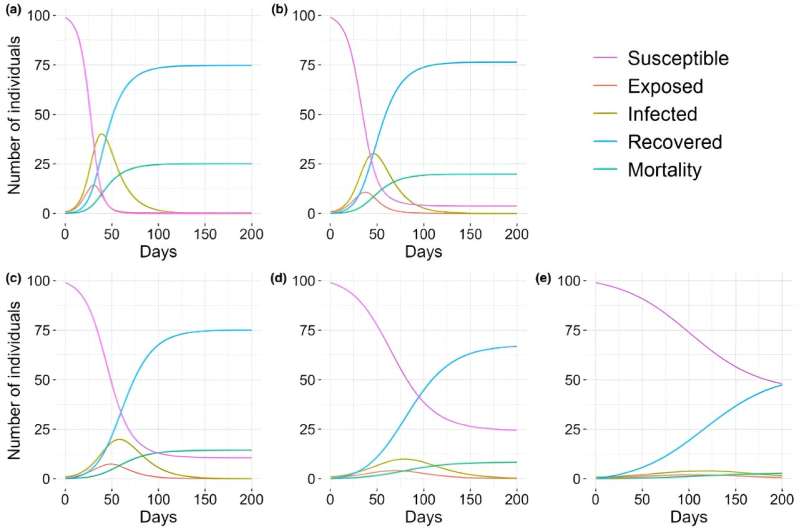This article has been reviewed according to Science X's editorial process and policies. Editors have highlighted the following attributes while ensuring the content's credibility:
fact-checked
peer-reviewed publication
trusted source
proofread
New study finds that male pathology in songbirds drives avian epidemic dynamics

New findings by biological sciences researchers at the University of Arkansas indicate that males play an outsized role in both the infection rate and spread of the avian bacterial pathogen Mycoplasma gallisepticum, a common cause of conjunctivitis in songbirds, particularly those that use bird feeders. Indeed, experiments revealed that male canaries have shorter incubation periods, longer recovery periods and higher pathogen loads than females.
In short, the study suggests that the more males there are in a given population, the worse an epidemic will likely be. This is believed to be the first study to model sex-biased transmission in this system and is one of a few to model sex-biased transmission dynamics in any avian pathogen system.
The resulting paper, "Male pathology regardless of behaviour drives transmission in an avian host–pathogen system," was published in the Journal of Animal Ecology. Authors include Erin L. Sauer, Chloe Connelly, Weston Perrine, Ashley C. Love and Sarah DuRant. All were students or postdoctoral fellows at the University of Arkansas at the time the work was conducted under the guidance of DuRant, an associate professor of biological sciences.
Differences in transmission rates between males and females in wildlife systems are often thought to be a result of behavior, partially because it is difficult to differentiate between behavior and physiology in wildlife. Males often fight and range across larger territories, providing more points of contact with other individuals who might be infected. Testosterone and stress of fighting can also suppress the immune system, potentially paving the way for increased vulnerability to illness.
This study, however, removed the question of behavior by isolating the test subjects. This enabled the team to focus solely on differences in host pathology, demonstrating that birds that get sicker and stay sicker longer have a greater contribution to epidemic dynamics regardless of behavior. In this study, those birds were male, suggesting a physiological rather than a behavioral difference from females.
While studies of other wildlife species and diseases will be needed to determine the scope of their findings, first author Sauer was willing to entertain scenarios where this information could prove useful in mitigating potential epidemics.
"If you know that male pathology is driving an epidemic," she speculated, "you could potentially use targeted interventions in trying to mitigate wildlife diseases, which could save effort and money. And instead of having to catch all individuals in a group, you could just catch the males in the group. But this would have to be on a disease-by-disease basis."
"The exciting finding in this study is that sex-based differences in physiology, regardless of behavior, can shape epidemic dynamics," DuRant said. "This work highlights how individual variation can shape the spread of disease."
More information: Erin L. Sauer et al, Male pathology regardless of behaviour drives transmission in an avian host–pathogen system, Journal of Animal Ecology (2023). DOI: 10.1111/1365-2656.14026
Journal information: Journal of Animal Ecology
Provided by University of Arkansas

















